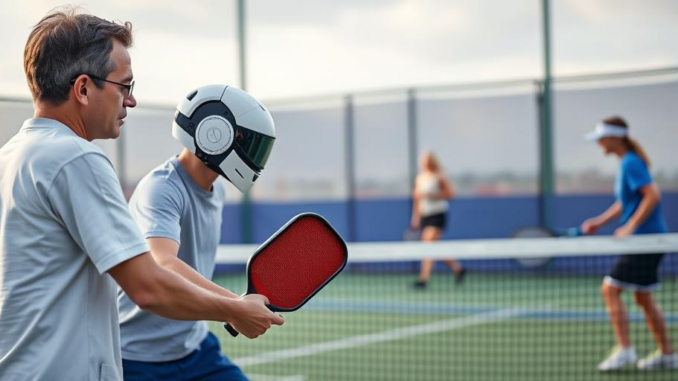
Summary
Cedars-Sinai employs generative AI to analyze patient notes, revealing insights into the growing number of pickleball-related injuries. This innovative approach improves data accuracy and efficiency, paving the way for more effective clinical research. The use of AI in healthcare holds great promise for advancing patient care and improving overall health outcomes.
Start with a free consultation to discover how TrueNAS can transform your healthcare data management.
** Main Story**
Pickleball, it’s everywhere, right? I mean, the sport’s exploded in popularity – we’re talking over a 200% jump in players in just the last three years. But, and there’s always a but, this boom has brought with it a rise in injuries. Falls are a big culprit, leading to fractures, sprains, the works. Now, Cedars-Sinai is tackling this head-on, and get this, they’re using AI to really dig into the data.
AI-Powered Data Extraction: A Game Changer
So, Cedars-Sinai is using generative AI, specifically GPT-4, to pull data from patient chart notes. It turns out it’s way faster and more accurate than doing it the old-fashioned way. This AI can pinpoint stuff like how likely an injury was, where it happened, how bad it was, and when it occurred, all while slashing the time it takes to review everything. That’s pretty wild, isn’t it? Kathy Bailey, a principal data intelligence analyst at Cedars-Sinai, said they “identified more than enough patients that the study had hoped for, with 80% correctly identified in our sample.” Can you imagine trying to do that manually? Forget about it.
They’re actually presenting this at HIMSS25, it’s titled “AI-Powered Extraction of Pickleball Injury Information from Patient Notes”, on Tuesday, March 4th. It’ll cover why they did it, how they did it, and what they found. Essentially, it’s a great example of using AI to meet the growing demand for better data extraction in clinical research, and it’s a great story.
The Advantages of AI in Healthcare
Think about it: old-school methods, like REGEX in SQL, often miss the little things in how people actually write about their experiences in medical records. And that can be really important. AI, because it can understand language better, gets a much fuller picture. It can pick up on details about how injuries happen, how serious they are, and exactly where they’re located. That kind of specific information is gold for researchers and doctors who are trying to come up with better ways to prevent injuries and improve treatment. For instance, I remember reading about a similar study where AI helped identify subtle patterns in patient data that led to earlier diagnosis of a rare condition. It was a game-changer for those patients.
The increasing use of AI in healthcare is set to revolutionize various aspects of medical practice, including diagnostics, treatment planning, and drug discovery, and you have to wonder how it’ll be used next. While AI is already assisting with everyday tasks and fueling research breakthroughs, it’s potential to address some of healthcare’s biggest challenges, from sustainability to precision medicine, is just beginning to be realized.
The Future of AI in Healthcare
It isn’t just a trend; it’s a major shift. While AI isn’t completely integrated into everyday care just yet, things are moving fast. As these systems get smarter, we’re likely to see a move toward a more preventative, personalized, and data-driven approach to healthcare. The development of AI-powered diagnostic tools, the acceleration of new drug discovery, and the personalized approach to treatment are all compelling examples of how AI is reshaping the future of medicine. And it’s exciting to think about where this could lead, you know? I, for one, am optimistic about the potential of AI to transform healthcare for the better. The use of AI models such as those used in the pickleball study, signifies just one example of its vast potential. As we continue to refine these technologies and integrate them into our healthcare systems, we can expect even greater strides in improving patient care and achieving the quadruple aim of healthcare: better population health, improved patient and caregiver experiences, and reduced costs.


AI finding pickleball injuries? Finally, a use for robots that isn’t stealing our jobs! I’m just waiting for the AI that can untangle my headphones. That would be a *real* healthcare breakthrough.
Haha, that’s a great point! AI untangling headphones would definitely be a game-changer. Perhaps the same AI that can identify pickleball injuries can be repurposed for that task! It could save us all a lot of frustration and time.
Editor: MedTechNews.Uk
Thank you to our Sponsor Esdebe